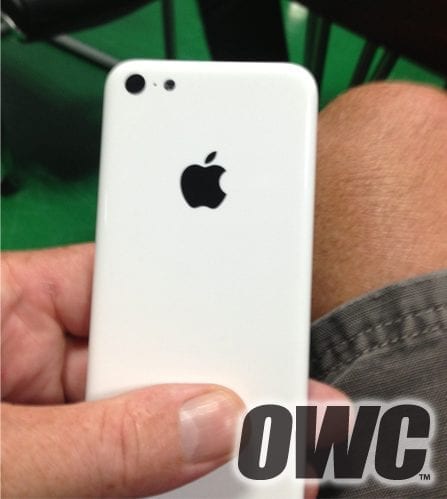
Rocket Yard > Random Thoughts & Topics > Could This Be The iPhone 5 lite In The Wild?
Could This Be The iPhone 5 lite In The Wild?
As we approach the back to school season, the iPhone rumors are in full force. This image, provided to OWC by an unnamed source, is purported to be of the upcoming, lower cost, iPhone 5S or iPhone lite.

As to whether this is the absolute real deal or not, we really cannot say – but there is one thing we can say for certain:
We have great NuGuard KX cases for the current iPhone 4/4s and 5 and you can rest assured that we’ll have cases with that same mil-spec protection and slim design to whatever iPhone lineup Apple releases next.









I don’t know about anyone else, but I need a miniDisplayPort cross-over connector to get from an “old” mac pro to a less-old LED cinema display (27″).
The relationship between the above and the rumored iPhone is that inter-connectability of “legacy” (two years old or older?) gear with new gear remains a real problem, one which is not always solved by the “after-market” outfits.
Since when did people start putting male-out cables on a device that traditionally receives INPUT? Makes sense for a laptop, where you don’t want to bring that guy to the mountain, or the mountain to the guy, I forget which…. That is, makes sense to keep the cables on the big thing that you don’t schlep in your backpack, to keep the laptop as Airy as a feather unless you want to tether to some bigger, less portable piece of equipment.
So my two video cards are both double DVI out — but in female form, for the male-ended cable — and one can get a DVI to mDP, but that’s also male, which doesn’t take to the male-out mDP from the LCD display.
So what I’d need is like the old “null modem cables,” but in this case, a “null mDP cable,” or “cross-over mDP M to F output (from macPro) to meet F mDP IN connector, not a straight-thru connector which one can find in several form factors.
The cross-over pin-outs are in the wickipedia article mini DisplayPort, in a paragraph beneath the pinout chart:
Pin out
Pin 1 GND Ground
Pin 2 Hot Plug Detect Hot Plug Detect
Pin 3 ML_Lane 0 (p) Lane 0 (positive)
Pin 4 CONFIG1 CONFIG1
Pin 5 ML_Lane 0 (n) Lane 0 (negative)
Pin 6 CONFIG2 CONFIG2
Pin 7 GND Ground
Pin 8 GND Ground
Pin 9 ML_Lane 1 (p) Lane 1 (positive)
Pin 10 ML_Lane 3 (p) Lane 3 (positive)
Pin 11 ML_Lane 1 (n) Lane 1 (negative)
Pin 12 ML_Lane 3 (n) Lane 3 (negative)
Pin 13 GND Ground
Pin 14 GND Ground
Pin 15 ML_Lane 2 (p) Lane 2 (positive)
Pin 16 AUX_CH (p) Auxiliary Channel (positive)
Pin 17 ML_Lane 2 (n) Lane 2 (negative)
Pin 18 AUX_CH (n) Auxiliary Channel (negative)
Pin 19 GND Ground
Pin 20 DP_PWR Power for connector
This is the pinout for the source-side connector; the sink-side connector pinout will have lanes 0–3 reversed in order, i.e. lane 3 will be on pin 3 and 5 while lane 0 will be on pin 10 and 12.
Looks like a doctored iPod Touch.